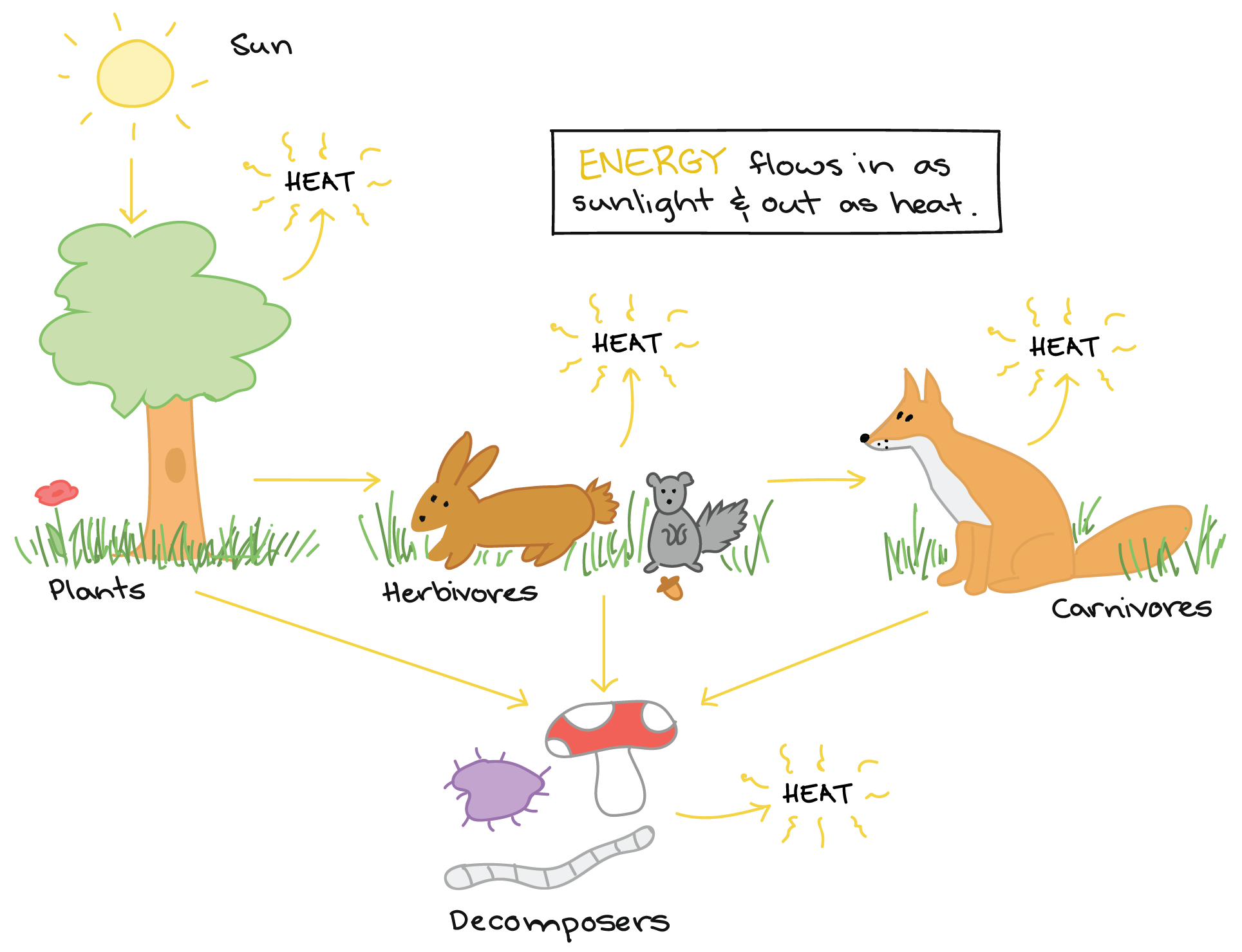Energy enters ecosystems as sunlight and is transformed into usable chemical energy by producers such as land plants algae and photosynthetic bacteria.
The transfer of energy between algae and herbivores is about.
A region s photosynthetic productivity is influenced most significantly by what.
However the amount of available energy decreases from one trophic level to the next.
After generating their energy from the sun plants pass the energy on to the primary consumers.
The transfer of the energy in the food chain is limited.
The average kinetic energy of the atoms or molecules in a particular substance is known as a.
Once this energy enters the ecosystem via photosynthesis and is converted into biomass by those producers energy flows through the food chain when organisms eat other organisms.
The transfer of energy between algae and herbivores is about 5 percent.
Lumps of manganese and other metals found on the ocean floor.
Get the answers you need now.
The transfer of energy between algae and herbivores is about a.
Food chains and webs show the transfer of energy between trophic levels.
The transfer of energy between algae and herbivores is about a.
The transfer of energy between algae and herbivores is about what percent.
Manganese salts that concentrate when seawater evaporates b.
Manganese nodules are a.
There is only 10 per cent of the transfer of energy from each lower trophic level to the next higher trophic level.
Energy transfer energy is transferred along food chains from one trophic level to the next.
Energy transfer between trophic levels is generally inefficient such that net production at one trophic level is generally only 10 of the net production at the preceding trophic level the ten percent law.
And hence the number of trophic levels in the food chain is limited.
The transfer of energy between algae and herbivores is about 10 percent.
The terms can be used to describe energy transfer in both autotrophs and heterotrophs.
This law known as the 10 per cent energy law was proposed by raymond lindeman.
Herbivores are animals that depend only on the plants for their nourishment and survival.
The availability of nutrients and the amount of solar radiation.
Herbivore in a food chain top carnivore in a food web.




























